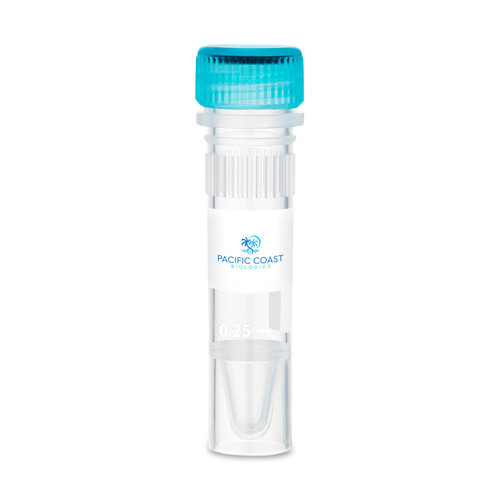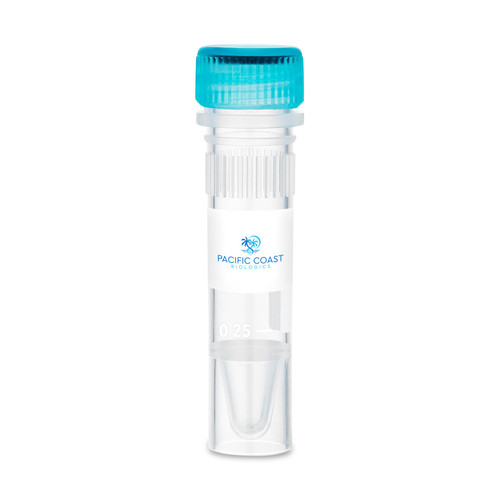Activin A, a member of the TGF-β family, showcases diverse biological functions, including the regulation of cellular proliferation and differentiation, as well as the promotion of neuronal survival. Its elevated presence in colorectal tumors in humans and in postmenopausal women has been linked to colorectal and breast cancers, respectively. Inhibins and follistatin, a diffusible TGF-β antagonist, can counteract the biological effects of Activin A. This molecule binds to two forms of activin receptor type I (Act RI-A and Act RI-B) and two forms of activin receptor type II (Act RII-A and Act RII-B). Activins can exist as homodimers or heterodimers of distinct β subunits. Initially synthesized as precursor proteins, they feature an amino terminal propeptide that is cleaved to unveil the C-terminal bioactive ligand. Recombinant Human/Murine/Rat Activin A manifests as a 26.0 kDa disulfide-linked homodimer comprising two βA chains, each composed of 116 amino acid residues.
|
Product Specifications
|
|
| Species |
Human, Mouse, Rat
|
| Published species |
Human, Mouse, Rat
|
| Expression System | E. coli |
| Amino acid sequence |
GLECDGKVNI CCKKQFFVSF KDIGWNDWII APSGYHANYC EGECPSHIAG TSGSSLSFHS TVINHYRMRG HSPFANLKSC CVPTKLRPMS MLYYDDGQNI IKKDIQNMIV EECGCS
|
| Molecular weight | 26 kDa |
| Class | Recombinant |
| Type | Protein |
| Purity |
≥ 98% by SDS-PAGE gel and HPLC analyses.
|
| Endotoxin concentration | <1 EU/µg |
| Activity |
Determined by its ability to inhibit the proliferation of mouse MPC-11 cells. The expected ED50 is ≤ 2.0 ng/ml, corresponding to a specific activity of ≥ 5 x 10^5 units/mg.
|
| Conjugate | Unconjugated |
| Form | Lyophilized |
| Contains |
no preservative
|
| Storage conditions | -20°C |
CAUTION
For Research Use Only. Not for use in diagnostic procedures.















